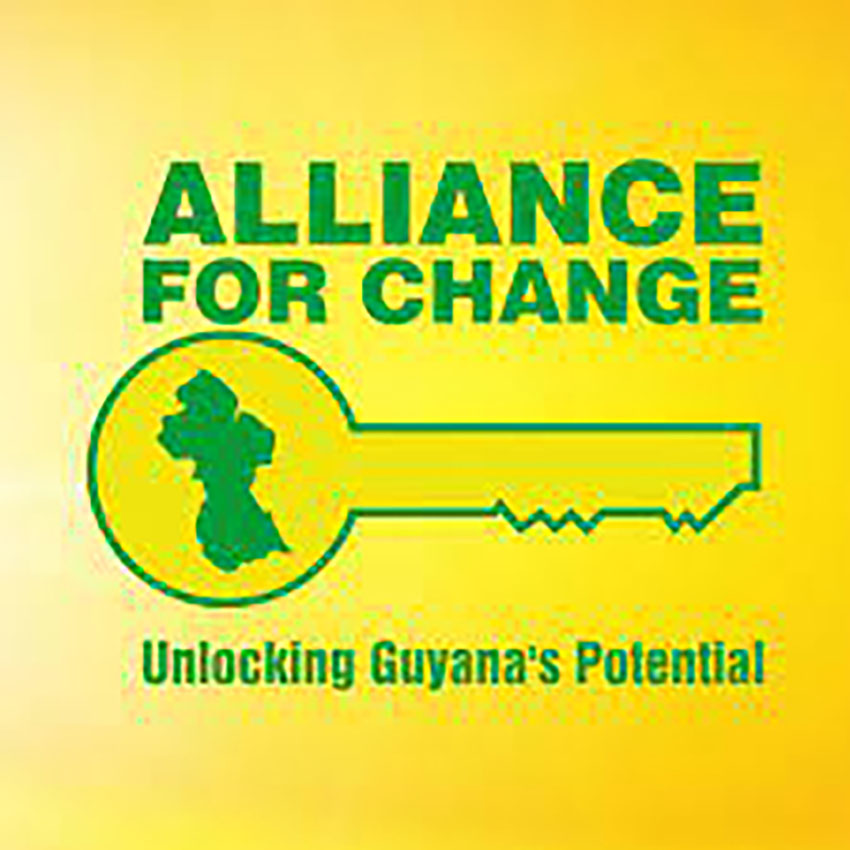The Alliance For Change (AFC) has expressed discomfort at the visible differences in education outcomes as evidenced by the recent National Grade Six Assessment (NGSA) 2024 results and holds the view that there is need to re-align Guyana’s education policy as well as engage in poverty alleviation.
The AFC observed in a release on Wednesday that the high passes in the NGSA 2024 results were concentrated in Region Four compared to the other regions across Guyana, and as such, presents a “window of opportunity” for an optimal redistributive policy intervention in the area of education, to deal with the high probability of a marginalized unskilled population from hinterland and rural areas being unable to access a meaningful share of the economic pie in the fastest growing economy, their homeland.
It was pointed out that a quick analysis of the NGSA results reveal that the majority of the top one per cent (Queen’s College) students attended private schools in Region Four and in Georgetown, versus the public schools and from the other regions, respectively. Further, the data points to an unequal educational gap in the hinterland regions Seven, Eight and Nine, as no student in these regions attainted a place in the top one per cent.
The release recalled the Minister of Education’s assertion that “every school is getting the same resources,” and that “whichever school you get you will be able to excel there,” and her pointing out that the top five national schools can only accommodate 800 students. It also noted that it was no secret that the top five schools for decades, account for most of the country’s top performers versus the other hundreds of secondary schools across the country. As such it contended, “It is therefore imperative that policy action must equalize resources in all schools so that the nation’s children irrespective of where they live must be given the same learning opportunities as a student attending a top five school in Georgetown.”
The release asked the question: If all schools are getting the same resources why it is the NGSA results are not more evenly distributed across the rural and hinterland regions? It posited that there is a clear indication that equality of opportunity for our hinterland and rural students compared to urban students is waning, and that the lack of optimal resources – teachers, text books, libraries, internet, and the ease of accessing schools in these regions – impede on learning outcomes.
Further into its analysis, the release asserted that this problem however is more complex. It quoted a UNICEF, WHO & World Bank 2023 report concerning levels and trends in child malnutrition which “alarmingly” reveals that Guyana leads in ‘Wasting’- a child malnutrition condition – “shamelessly” topping the chart in Latin America and the Caribbean, and refers to it as ironic that this is taking place in the fastest growing economy in the world.
“Even from a layman’s view, malnutrition affects cognitive learning in poverty-stricken communities. There is an inequitable race between the haves and the haves not in our society- there is a strong correlation that a small percentage of students who are fortunate, and those who have access to private schools will attain better schools versus the under- privileged, invariably from hinterland and rural communities.”
It further referenced a World Bank report (2022) fact sheet which reveals that 48 percent of Guyanese live in poverty which is highly concentrated in the hinterland regions with limited access to public services, adding, “The problem is interrelated and the income inequality gap must be closed by a redistributive policy to effect change for the future – our children.”
And if all this, coupled with the learning loss during the COVID-19 pandemic was not enough, the teachers, the statement pointed out, had to endure a long strike action for better wages, in the fastest growing economy in the world. This, it reminded, is against the backdrop of budgetary allocations that are pumped into the failing sugar industry versus teachers’ wages.
The release took a step back in time to Guyana’s signing of the CARIFORUM-EU Economic Partnership Agreement which offset the European Development fund (EDF) of G$34 billion between 2006 and 2013 for the restructuring of the sugar industry for competitive trade. It argued that in spite of this windfall, the younger generations were not given the opportunity to study agriculture as a science and other disciplines for participation in the economic boom. “One has to wonder if this is an attempt to control the future generations through dangling bread and butter issues for political greed, as an electoral ploy.”
In this context, the AFC contends that one objective of government policy action should be social equity with related goals to promote equality of opportunity; meet the needs of those who are least well off and to provide social safety nets and transitional assistance.
Further, if it is that the government does care about its future population, then it will equalize the opportunity for the nation’s children. An extra dollar of income means more to the poor than the rich through redistributive polices such as social safety nets including conditional cash transfers that could reduce inequality. This, it argued, should be more than the Because We Care cash grant of $45,000 per year and must address inherent problems in communities such as health, nutrition and access to schooling for the 48 per cent of Guyana’s poor which includes school children.
As an example, the release noted that such a policy has been tested and proven in neighbouring Brazil through the Bolsa Família social protection programme as part of that government’s mainstream social policy for poverty and exclusion. This social safety net, it explained, is a Conditional Cash Transfer (CCT) means-tested and targeted payment to poverty groups classified as “poor”, “very poor” and “extremely poor.” The CCT payments were “designed to attack long term poverty by making payments conditional upon school attendance and participation in health care, boosting demand and strengthening human capital as a joint responsibility between government and families.” The policy reach curtailed the intergenerational transmission of poverty in poor households and promoted synergies between education, health and other sectors.
It was also pointed out that the CCT successes are well documented as it targeted the vulnerable, and people who were excluded from social protection, and covered over 11.4 million families or 44 million people. Some notable achievements are strengthened food security and nutritional status of mothers; improved school attendance (97%); and lower school dropout rate of beneficiaries.
Given that Guyana’s population is minuscule compared to Brazil’s CCT policy reach of 44 million poor people, the argument is made that Guyana’s oil revenues can sustain a redistributive policy that is technically and financially feasible, politically viable and can be done with administrative ease. “The government as the custodian of the oil revenues must embark on such a social protection programme to equalize the opportunity for the nation’s children across all regions- Guyana’s future,” the release added.








